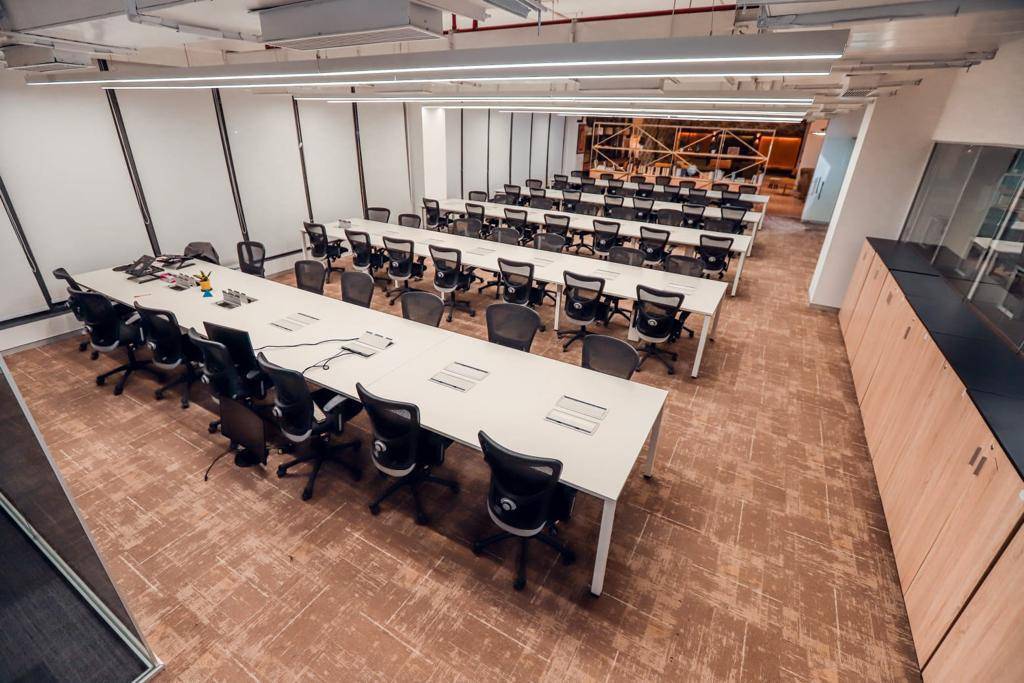In recent years, co-working spaces have surged in popularity, transforming traditional work environments and influencing local economies and real estate markets in profound ways. As remote work and freelance employment continue to grow, co-working spaces offer flexible, collaborative, and cost-effective alternatives to conventional office settings. This article explores the latest trends and statistics highlighting the impact of co-working spaces on local economies and real estate markets.
Economic Implications
The rise of co-working spaces has injected significant vitality into local economies. According to a 2024 report by the Global Co-working Unconference Conference (GCUC), the co-working industry contributes over $26 billion annually to the global economy. This growth is driven by the increasing number of start-ups, freelancers, and small businesses seeking affordable and flexible office solutions.
Co-working spaces foster local entrepreneurship by providing affordable and scalable office environments. Start-ups, in particular, benefit from the reduced overhead costs and access to networking opportunities. This has led to an increase in business creation and job opportunities in areas with a high concentration of co-working spaces. For instance, a study by the Economic Development Administration found that for every new co-working space established, there is a correlated 4.5% increase in local small business growth within a two-mile radius.
Moreover, co-working spaces often partner with local businesses, such as coffee shops and restaurants, which see increased foot traffic and revenue as a result. This symbiotic relationship supports local businesses and enhances community engagement. In urban centers like New York City and San Francisco, the integration of co-working spaces into neighborhoods has been linked to a boost in retail sales and local services.
Real Estate Market Trends
The influence of co-working spaces on the real estate market is equally noteworthy. The proliferation of these spaces has led to shifts in demand for commercial real estate. A 2024 survey by CBRE revealed that co-working spaces now occupy approximately 5% of office space in major metropolitan areas, up from 2% just five years ago.
The growing demand for co-working spaces has spurred changes in office property development and leasing. Landlords and property managers are increasingly adapting to this trend by incorporating flexible workspaces into their portfolios. This has led to the rise of hybrid office models that blend traditional leases with co-working options, catering to both large corporations and small businesses.
Additionally, the expansion of co-working spaces has impacted property values. In areas where co-working spaces have become prevalent, there is often a noticeable increase in commercial property values. For example, in the downtown district of Austin, Texas, commercial property values have risen by an average of 12% since the introduction of several major co-working hubs. This is partly due to the enhanced attractiveness of these areas as vibrant, mixed-use environments.
Challenges and Future Outlook
Despite the positive impacts, the co-working industry faces several challenges. The COVID-19 pandemic underscored the vulnerability of co-working spaces to global disruptions, leading to temporary closures and shifts in demand. As businesses adapt to new hybrid work models, co-working operators must innovate to meet evolving needs. This includes enhancing health and safety measures and leveraging technology to facilitate remote and in-person collaboration.
Looking ahead, the co-working sector is expected to continue its expansion, with a projected annual growth rate of 10% through 2028, according to Market Research Future. The focus will likely shift towards niche and specialized co-working environments catering to specific industries or professional needs, such as tech start-ups or creative professionals.
Conclusion
Co-working spaces have had a transformative impact on local economies and real estate markets. By promoting entrepreneurship, stimulating local business growth, and influencing property values, these spaces have reshaped the landscape of modern work environments. As the sector evolves, it will be crucial for stakeholders to adapt and leverage these changes to maximize the benefits for both the economy and real estate markets.
Authored By;










.png)